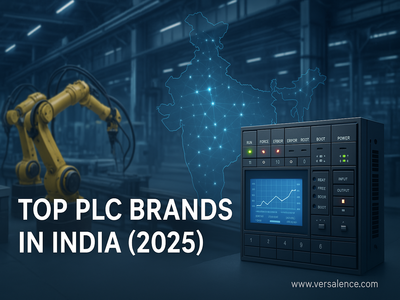The rapid adoption of Industrial IoT (IIoT) is transforming workforce dynamics in manufacturing, logistics, and other industrial sectors. As businesses embrace smart automation, real-time data analytics, and AI-driven insights, traditional roles are evolving, and new opportunities are emerging. By 2025, Industrial IoT is expected to enhance productivity, streamline operations, and redefine the way human workers interact with technology.
This shift is not just about automation replacing jobs—it’s about augmenting human capabilities with real-time insights, remote monitoring, and predictive analytics. Let’s explore how IIoT is reshaping workforce dynamics, improving efficiency, and driving industrial transformation.
1. The Rise of Smart Workplaces
Industrial IoT enables smart factories and workplaces, where machines, sensors, and workers are interconnected through cloud-based systems. This connectivity provides real-time insights into production lines, inventory, equipment health, and energy consumption.
- Workers use IIoT dashboards to monitor machine performance and production efficiency.
- Wearable devices and smart glasses assist employees with augmented instructions and real-time alerts.
- AI-driven analytics help decision-makers optimize workflows and reduce inefficiencies.
As a result, industrial workers are shifting from manual labor to technology-driven roles, focusing more on data interpretation, troubleshooting, and process optimization.
2. Predictive Maintenance: Minimizing Downtime
One of the biggest advantages of IIoT is predictive maintenance, which allows industries to prevent equipment failures before they happen. Smart sensors continuously track vibration, temperature, and pressure levels, alerting maintenance teams when anomalies are detected.
This transformation affects workforce dynamics in several ways:
- Reduced need for routine inspections: Workers no longer have to conduct manual checks, as IIoT automates diagnostics.
- Faster issue resolution: Maintenance teams focus on repairing only when necessary, reducing unnecessary downtime.
- Skill evolution: Technicians are trained in data analysis and predictive modeling, shifting their role from reactive maintenance to proactive problem-solving.
Industries using IIoT-driven maintenance report a significant reduction in downtime and maintenance costs, leading to a more efficient workforce.
3. Remote Monitoring and Virtual Collaboration
Remote work is no longer limited to office jobs. IIoT has introduced remote monitoring capabilities in industrial settings, allowing engineers and supervisors to oversee operations from anywhere.
- Cloud-based platforms provide real-time visibility into equipment performance and factory operations.
- AR-assisted remote troubleshooting enables experts to guide on-site workers through repairs, reducing travel costs.
- IIoT-driven robotics allow operators to control machinery remotely, enhancing flexibility in workforce deployment.
This has led to a hybrid workforce model, where physical presence is no longer required for monitoring, troubleshooting, or decision-making.

4. Workforce Safety and Risk Reduction
IIoT plays a crucial role in ensuring worker safety, particularly in hazardous industries like oil & gas, mining, and chemical manufacturing. Smart sensors and AI-powered alerts help prevent accidents by detecting:
- Gas leaks and toxic chemical exposure
- Equipment malfunctions leading to safety hazards
- Worker fatigue and ergonomic stress through wearable sensors
Additionally, exoskeletons and wearable IoT devices assist workers in physically demanding tasks, reducing strain and minimizing workplace injuries.
As a result, IIoT is making industrial environments safer while reducing liability and compliance risks for businesses.
5. Skills Evolution and Job Creation
While automation reduces some manual tasks, IIoT is creating new roles that require technical expertise, data interpretation, and digital management. Companies are investing in upskilling their workforce to handle:
- IIoT device management and configuration
- AI and machine learning analytics for industrial processes
- Cybersecurity for connected systems
- Augmented reality (AR) and digital twins for process optimization
By 2025, industrial workers will transition from labor-intensive tasks to high-tech roles, focusing on automation management, data analytics, and system integration.
6. The Future of Human-Machine Collaboration
Rather than replacing workers, IIoT enhances human-machine collaboration, allowing industrial teams to:
- Automate repetitive tasks, freeing workers for more strategic responsibilities.
- Leverage AI for decision-making, improving efficiency.
- Use robotic assistants and co-bots, increasing productivity without reducing jobs.
The role of humans in industrial operations will shift from manual execution to strategic oversight, where workers manage intelligent systems rather than performing repetitive tasks.
Final Thoughts
The adoption of Industrial IoT in 2025 is reshaping workforce dynamics by enhancing efficiency, improving safety, and creating new high-tech roles. While automation reduces some traditional tasks, it also empowers workers with data-driven decision-making and smart technology.
At Aknitech Automation, we help industries integrate IIoT solutions that optimize productivity, improve worker safety, and enhance human-machine collaboration. Businesses that embrace these changes will stay ahead in the competitive landscape while creating a smarter, more agile workforce.
Want to future-proof your workforce with IIoT? Contact us today to explore cutting-edge industrial automation solutions.







